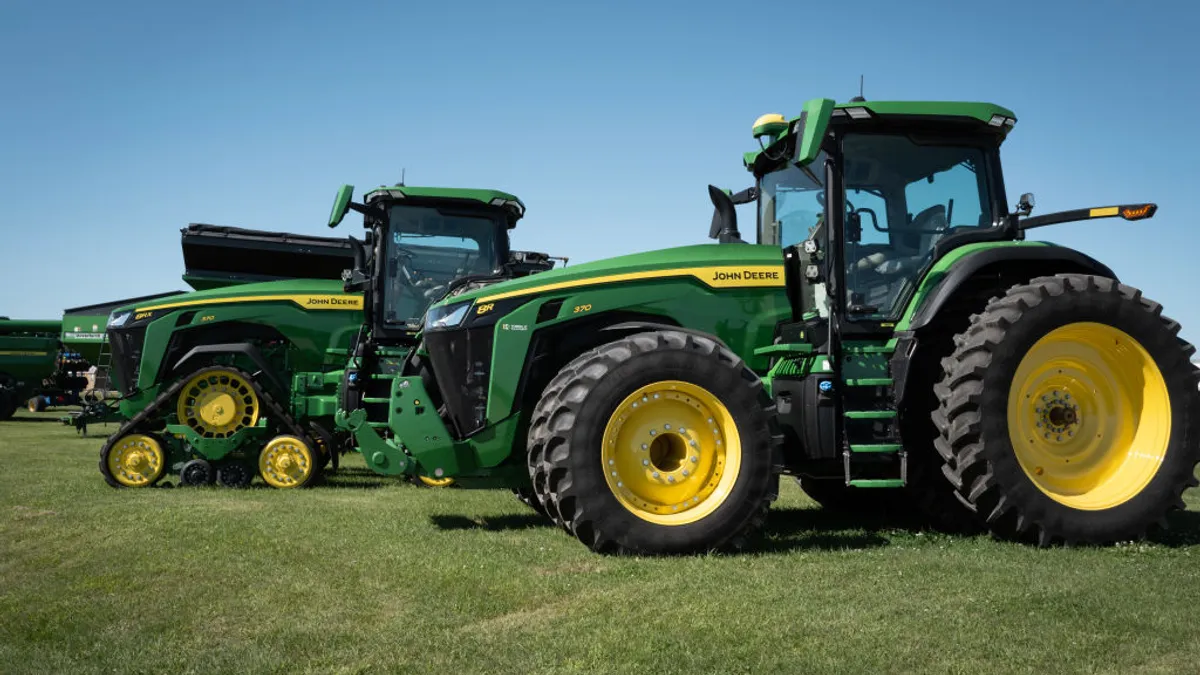U.S. sales of tractors and combines continued to fall in April as farm equipment manufacturers navigated ongoing headwinds from a mix of tariffs, high interest rates and increased input costs.
The total number of two-wheel- and four-wheel-drive tractors sold for the month fell 12.3% to 22,201, according to recent data from the Association of Equipment Manufacturers, a difference of 3,116 units.
From January to April, industry sales declined 13.3% year over year to 58,964 tractors, AEM data show.
Meanwhile, Combine sales plummeted 48.3% to 936 units over the same period. For the month of April, they were down 31.9%, or by 194 units.
As farmers take a more cautious approach to capital spending, Curt Blades, senior vice president of the AEM, said in a statement that he is hopeful for a market rebound as demand picks up in the warmer months.
“With planting season underway, we remain optimistic the ag economy will improve, leading to a strengthening of the ag equipment market,” Blades said.
U.S. tractor sales typically peak ahead of the spring harvest months with a later spike in October during fall harvest, according to AEM data. While market trends have been consistent since 2020, demand has significantly weakened since the tractor boom of 2022.
In response, equipment giants such as Deere & Co. and CNH Industrial have significantly cut their production output and laid off droves of manufacturing workers.
Since March 2024, the John Deere tractor maker has laid off 1,866 people across its factories and offices in Iowa alone, as of February. Earlier this year, CNH notified workers at plants in North Dakota and Minnesota of 373 job cuts, citing “current and anticipated market conditions.”
Despite gloomy sales and projected tariff impacts across the industry, Deere executives were optimistic on a May earnings call about conditions improving this year. Chairman and CEO John May said the company saw sales momentum carry forward into the second quarter from the first quarter, citing $10 billion in federal emergency relief payments to farmers as a potential catalyst.
Markets in Canada are already showing signs of recovery. Total tractor sales from January to April increased 3.4% over last year, according to AEM data for the country. This was driven in part by renewed demand for four-wheel-drive tractors, which resulted in a sales increase of 46.3% year-to-date.
The global tractor market is expected to be valued at $89.8 billion this year and is on track to reach $119.6 billion by 2030, according to market research group Mordor Intelligence. The Asia-Pacific and North American markets are positioned to drive much of the growth as farmers incorporate more machinery into their agricultural practices amid labor shortages and rising costs.















